Benjamin Moore is one of the most popular and trusted paint brands in North America. Known for its premium quality paints and stunning color collections, Benjamin Moore offers a vast array of colors for every design style. One of its most popular neutral paint colors is Classic Gray.

Part of Benjamin Moore’s Color Preview collection, Classic Gray first debuted in 2016. Within a short time, it has become one of Benjamin Moore’s bestselling grays. The versatile, livable shade works beautifully in a variety of interior spaces and decor styles.
Benjamin Moore as a Brand
Benjamin Moore has been creating premium paints for over a century. The company was founded in 1883 by Benjamin Moore in Brooklyn, New York. Still family-owned today, Benjamin Moore operates 64 manufacturing facilities across North America. Its paints are sold exclusively by 7,500 locally owned paint dealers.
Benjamin Moore is renowned for its unwavering commitment to quality and innovation. The brand offers over 3,500 Benjamin Moore colors created by expert color chemists. Apart from architectural paints, Benjamin Moore also offers coatings for specialty industrial and marine applications. Their premium products are supported by best-in-class technology and customer service.
Over the years, Benjamin Moore has received various industry accolades. It has been ranked “Highest in Customer Satisfaction” by J.D. Power for eight consecutive years. Benjamin Moore was also awarded the Asthma and Allergy Friendly Certification by the Asthma and Allergy Foundation of America for several of its product lines.
Introduction to Classic Gray (OC-23/1548)

Classic Gray is a warm, approachable gray that flatters any design style. It is identified as OC-23 in Benjamin Moore’s Off White Collection or 1548 in the Benjamin Moore Color Preview collection.
This versatile neutral features gentle violet-pink undertones. Depending on the lighting and room decor, it can take on beige, greige, or taupe tones. The subtle color variations make Classic Gray feel soft and livable. It provides a beautiful, mellow backdrop for any interior.
The warm earthiness of Classic Gray sets it apart from cooler grays. Its versatility and warmth have made it a staple neutral for designers and homeowners. Within a few years of launch, Classic Gray has become one of the most sought-after grays in Benjamin Moore’s expansive color catalog.
The Popularity and Versatility of Classic Gray in Interior Design
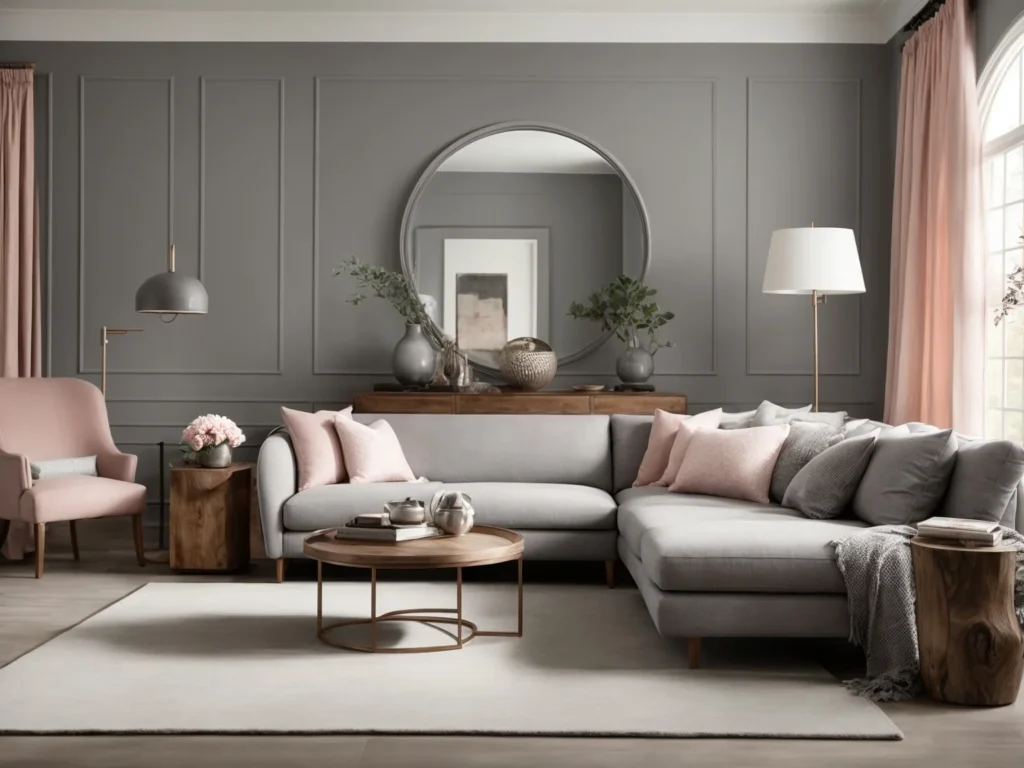
Classic Gray is a highly versatile neutral that works beautifully in homes of every style. Its flexibility and warmth have contributed greatly to its popularity among interior designers and homeowners.
The subtle undertones allow Classic Gray to blend seamlessly into both cool and warm palettes. It partners beautifully with pastels, deeper shades, and all wood tones. Classic Gray creates a relaxing backdrop that lets accent colors shine.
Its greige versatility enables it to bridge the gap between beiges and grays. The neutral gray base provides livability, while its pink-violet hue adds softness and warmth. This characteristic versatility makes Classic Gray suitable for everything from modern to farmhouse design.
Additionally, the gray base of Classic Gray conveys an inherent coziness. The earthy tone feels grounded and welcoming. Unlike stark whites, it does not read as sterile or cold. This makes spaces painted in Classic Gray feel instantly warmer and more inviting.
Warmth and Undertones of Classic Gray
Analysis of Classic Gray as a Warm Gray

Classic Gray is considered a warm gray due to its distinctive undertone. Most grays have blue, green, or purple undertones. Classic Gray stands apart with its subtle violet-pink hue that warms up its gray base.
In certain lights, the pinkish undertones become more apparent, lending a greige or taupe effect. The warmth balances out the neutral gray to create an incredibly versatile, livable shade. It has the cozy gravitas of gray blended with the approachability of beige.
Unlike many warm beiges, the depth of Classic Gray keeps spaces feeling grounded. The gray base provides a soothing, enveloping backdrops without seeming flat or sterile. The violet tinge adds just enough character without dominating.
Understanding the Subtle Undertones: Violet-Pink Hue

Classic Gray’s distinctive undertone sets it apart from other grays. Most grays tend to have purple, blue, or green undertones that create a cooler effect. Classic Gray’s violet-pink hue warms up the gray to make it more versatile for interiors.
In certain lights, the pinkish tones become more noticeable, taking the color into greige or taupe territory. But the violet-pink is subtle enough that it reads as a neutral gray in many environments. This chameleon-like quality expands the settings where Classic Gray can be used.
The pinkish tinge is just strong enough to counterbalance the neutral base without skewing too beige. It provides a lift of warmth while allowing the relaxing gravitas of gray to take center stage. This delicate balance is what makes Classic Gray such a universally flattering shade.
How Lighting Affects Its Appearance: Northern vs. Southern Exposure
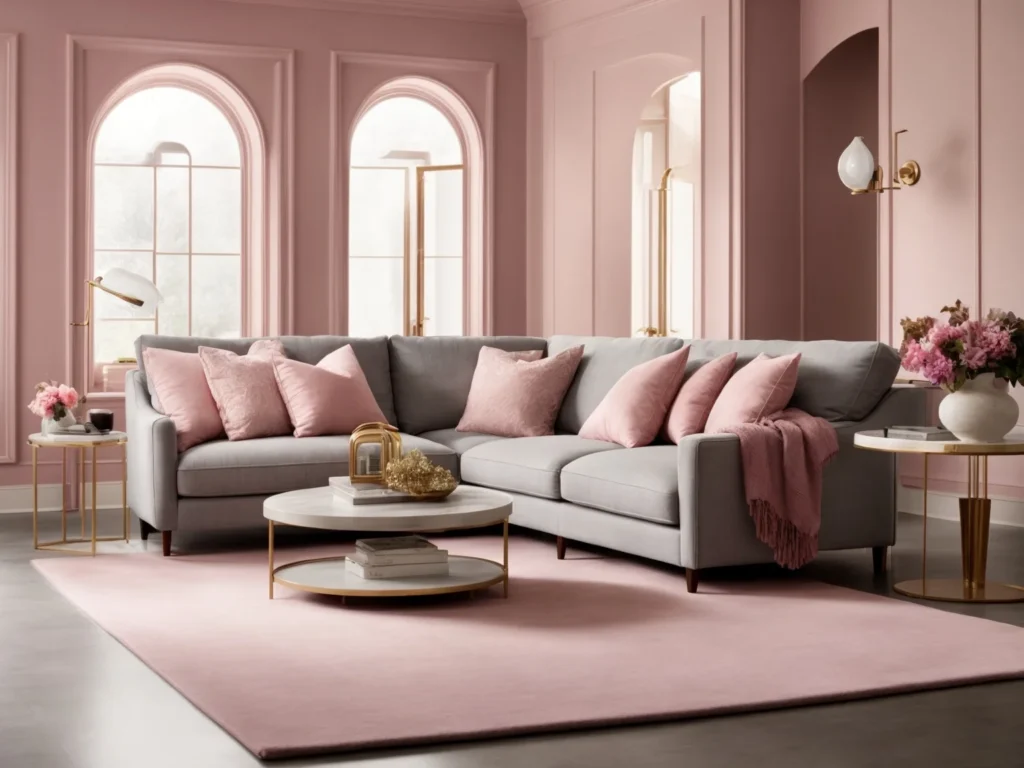
Lighting plays a key role in how Classic Gray is perceived. In northern exposure rooms with cool, indirect light, it appears as a light to medium-toned gray. The violet-pink undertones fade into the background.
But in southern exposure rooms washed with warm daylight, the pink undertones become more noticeable. Here, Classic Gray takes on greige or taupe leanings, picking up the warmth of the light. The pinkish tinge reflects the golden light to create a cozy, welcoming backdrop.
This color variability allows Classic Gray to shift between cool and warm effortlessly. The chameleon-like adaptability enables it to complement both cool and warm color schemes. Despite its subtler pinkish appearance in north-facing rooms, it still retains enough depth and character to avoid feeling flat or sterile.
LRV (Light Reflectance Value) and Its Impact
Explaining LRV and its Significance
LRV or Light Reflectance Value indicates how much light a color reflects. LRV ranges from 0 (absorbs all light) to 100 (reflects all light). Light colors have a higher LRV.
A color’s LRV profoundly impacts how it is perceived. It affects the ambiance, spatial quality, and practical utility of the color. Therefore, LRV is a crucial consideration for paint selection.
LRV also determines whether a color meets safety guidelines in spaces like hallways and stairs. Darker colors with lower LRV are not advisable in low-light, high-traffic areas.
Classic Gray’s LRV and How It Influences Color Perception
Classic Gray has an LRV of 50, meaning it reflects 50% of visible light. This positions Classic Gray right in the middle of the LRV scale.
The moderately light LRV creates a cozy, enveloping effect in interiors. Since it absorbs and reflects light equally, Classic Gray has a balanced, grounded appearance. Unlike darker grays, it does not create an oppressive, gloomy ambiance.
At the same time, Classic Gray has enough depth that it does not read as sterile or vanish into the background. The LRV strikes the right equilibrium between lightness and saturated depth. This allows the color to establish itself as a versatile neutral shade.
The moderately light LRV also means Classic Gray is suitable for most interior walls and cabinets. Its versatility and compliance with safety guidelines make it an ideal choice for high-traffic areas like hallways and foyers.
Best Environments for Classic Gray Based on LRV

Classic Gray’s LRV of 50 allows it to work well in most interior settings. Its ability to absorb and reflect light equally creates a harmonious, enveloping backdrop.
The versatility stemming from the LRV makes Classic Gray suitable for living rooms, bedrooms, dining rooms, dens, foyers, hallways, and staircases. It can be used across most of the home without seeming too imposing.
For kitchens and bathrooms, the greige flexibility helps Classic Gray complement both warm wood cabinets and cool marble or tile finishes. The balanced LRV unifies these materials beautifully.
Smaller spaces also benefit from Classic Gray’s tranquil ambiance. The grounded LRV enhances the coziness of studies, reading nooks, and powder rooms without overwhelming the area.
Overall, the adaptable LRV enables Classic Gray to flatter any room while complying with safety recommendations. This makes it a fail-safe neutral shade.
Classic Gray in Different Settings
Classic Gray works beautifully in every room of the home. Its versatility stems from the balanced LRV and greige adaptability.
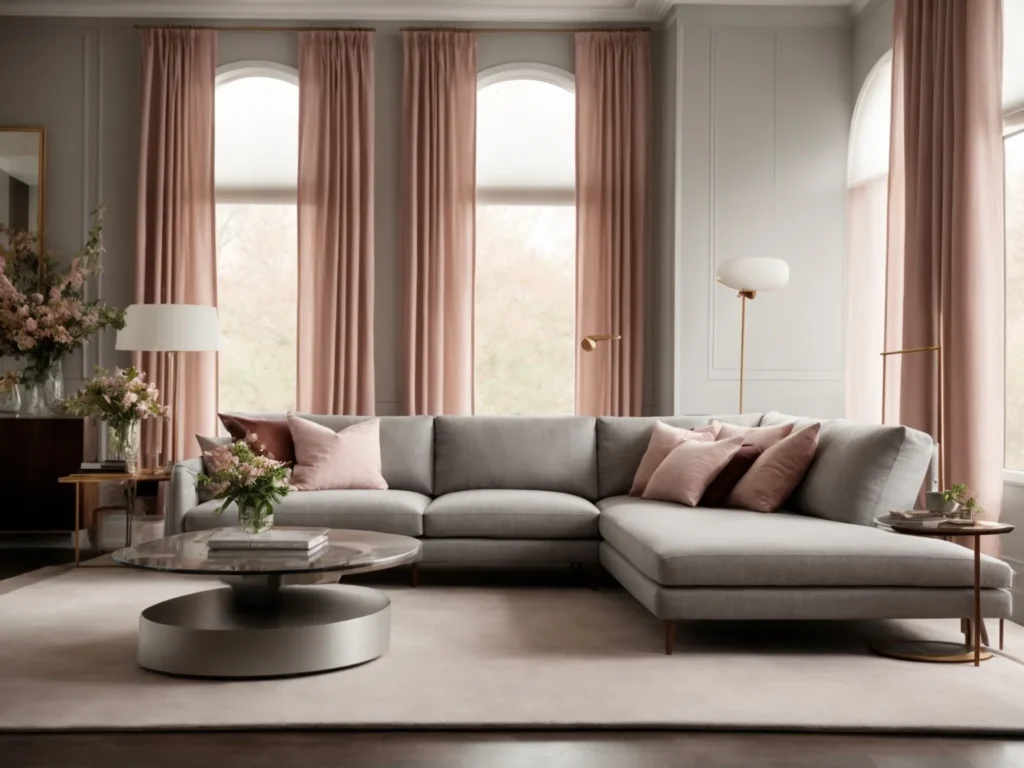
In living rooms, Classic Gray creates a relaxing, welcoming backdrop. The cozy LRV establishes a comfortable vibe, while the subtle pinkish tones lend a refined elegance. It pairs equally well with sleek modern furnishings or overstuffed traditional sofas.
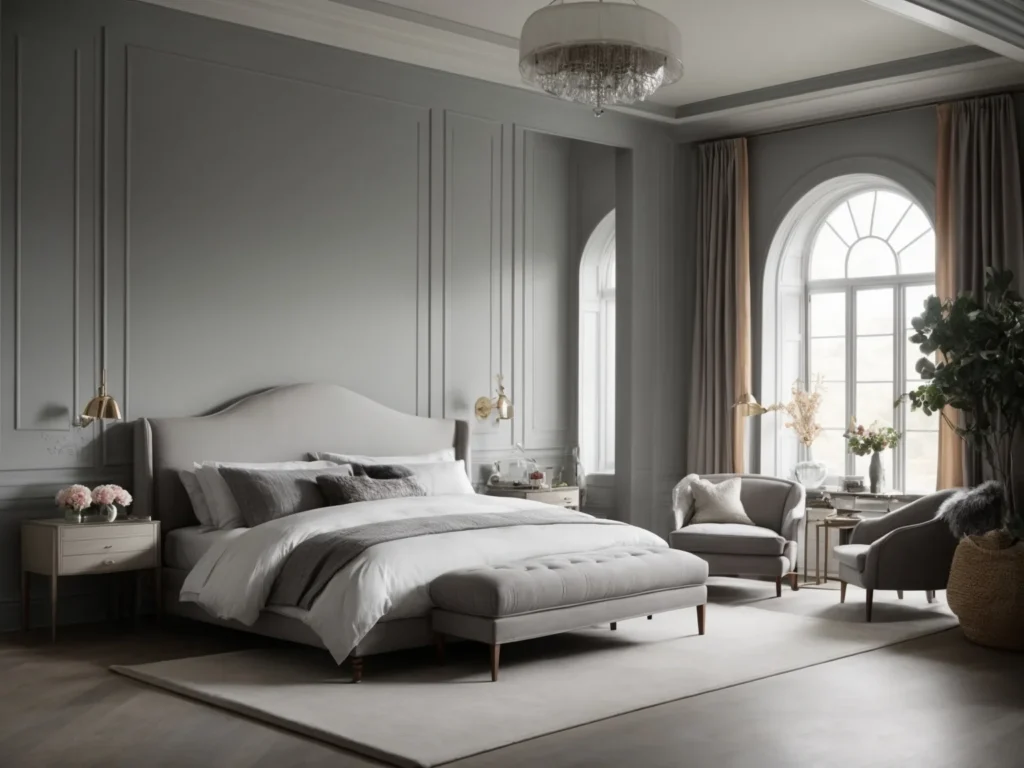
Bedrooms painted in Classic Gray feel peaceful and cocooning. The enveloping neutral gray provides the ideal environment for restful sleep. Accent walls in deeper shades add drama without feeling overwhelming.

For kitchens, Classic Gray provides a soothing yet lively base. Against crisp white cabinets, it reads as a true neutral gray. But it picks up the warmth of wood cabinets and granite countertops, taking on greige tones that unify mixed materials. The versatility enables it to suit both contemporary and traditional kitchen designs.
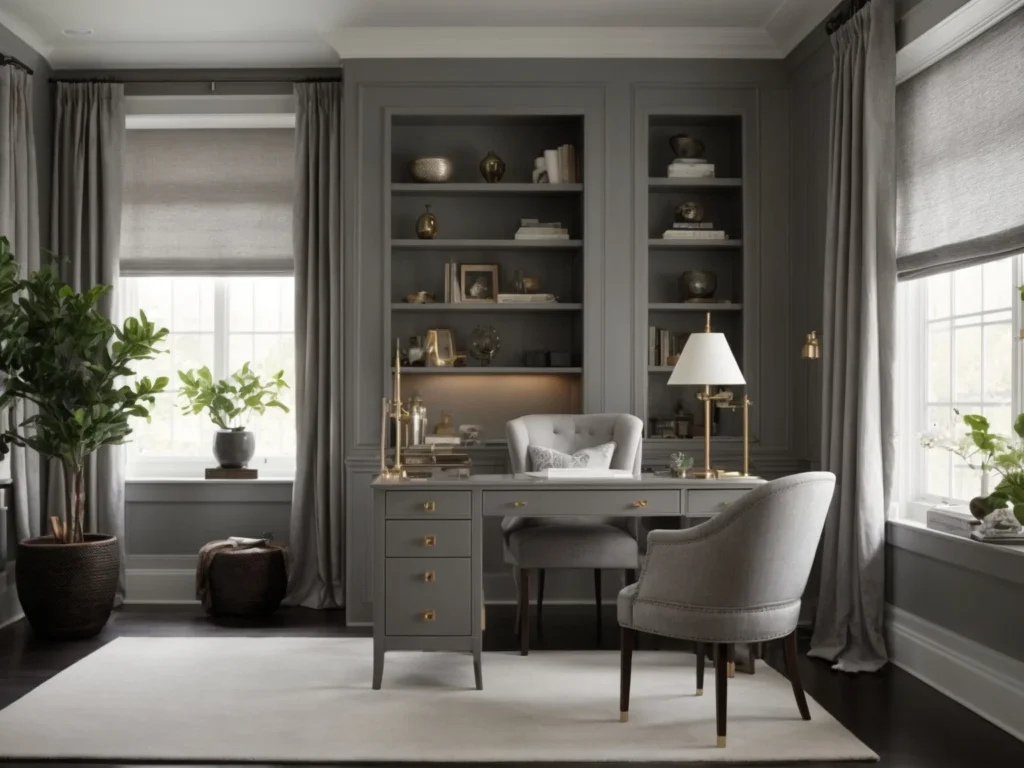
In home offices, Classic Gray promotes concentration with its subtle depth. It also works well in powder rooms, helping small spaces feel cozy rather than confining. Throughout the home, the chameleon-like adaptability of Classic Gray allows it to complement and enhance each space.
How Classic Gray Complements Different Styles: Modern, Traditional, Eclectic
A hallmark of Classic Gray is its ability to complement a diverse range of interior design styles. The versatility originates from its distinctive greige characteristics.

In modern interiors, Classic Gray provides a refined, cohesive backdrop for sleek lines and geometric shapes. The light gray base appeals to the modern affinity for neutral palettes. But the subtle warmth prevents the color from reading as stark or sterile.

For traditional interiors, Classic Gray offers familiar gravitas along with approachable warmth. The gray tone evokes heritage style without appearing cold. The violet-pink undertone imparts livability and versatility.
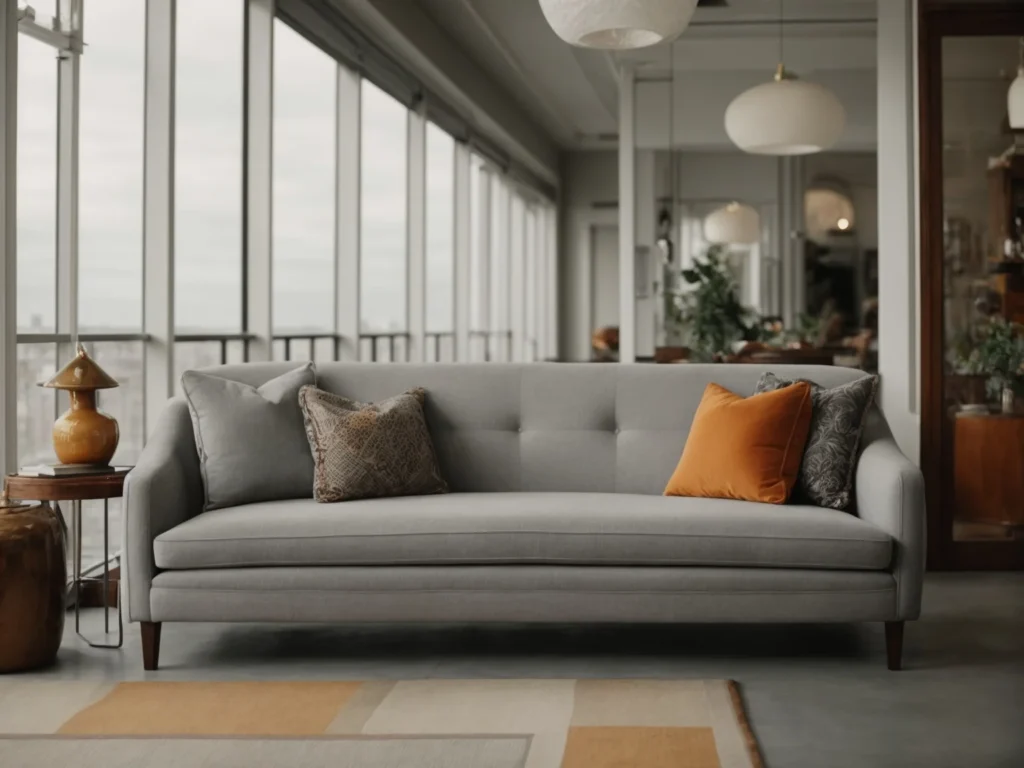
In eclectic settings, Classic Gray gracefully bridges disparate elements. The gray adapts effortlessly from color to color, unifying mixed stylistic components. Despite its chameleon nature, Classic Gray maintains enough personality to avoid looking generic.
No matter the interior design style, Classic Gray conveys an inherent coziness and warmth. This characteristic versatility makes it one of the most sought-after paint colors.
Pairing with Furniture and Decor: Wood Tones, Metallic Accents, Textiles
A key benefit of Classic Gray is its ability to complement diverse furniture pieces, metals, and fabrics. This flexibility comes from its greige adaptability.

All wood tones work beautifully with Classic Gray. The pink undertones pick up the warmth of oak, walnut, teak, and mahogany, while contrasting attractively with cool-toned woods like ash and maple. Rich wood accents ground Classic Gray’s airiness.
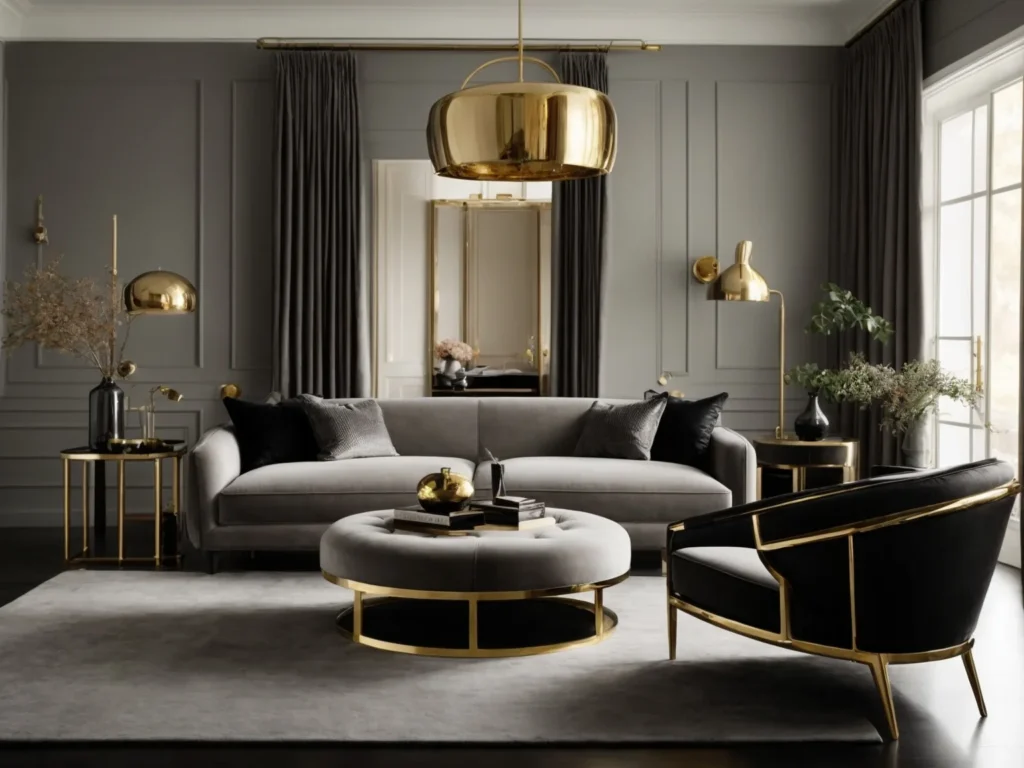
Polished metals like brass, gold, nickel, and chrome enliven Classic Gray’s subtle depth. Matte black accents and hardware provide bold contrast. The color also pairs elegantly with natural textures like linen, wool, jute, velvet, and suede.
Overall, the versatility of Classic Gray enables it to be dressed up or down effortlessly. Charming and sophisticated in equal measure, it suits casual, formal, and everything in between.
Comparing Classic Gray to Other Colors
Classic Gray vs. Other Benjamin Moore Grays: Pale Oak, Balboa Mist
Within Benjamin Moore’s extensive catalog of grays, Classic Gray stands out for its distinctive greige warmth. Nearby shades like Pale Oak and Balboa Mist read as cooler neutrals.
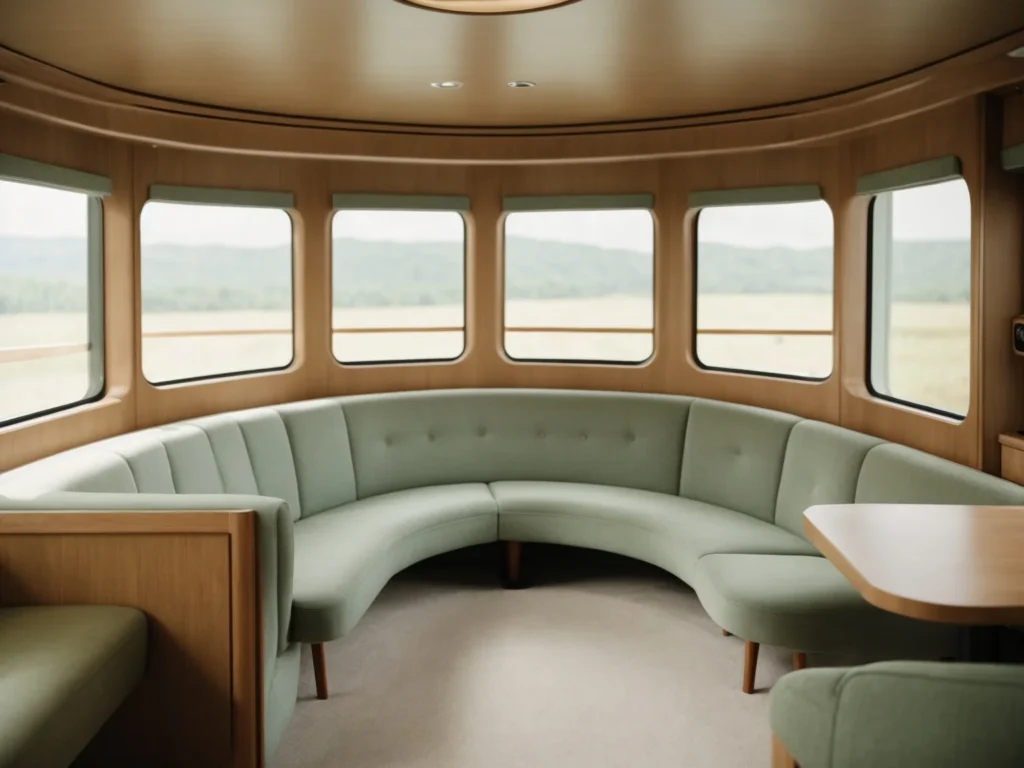
Pale Oak is a pale, peaceful gray with green undertones. At an LRV of 63, it reads as much lighter than Classic Gray. The greenish cast gives Pale Oak a more formal, reserved ambiance.
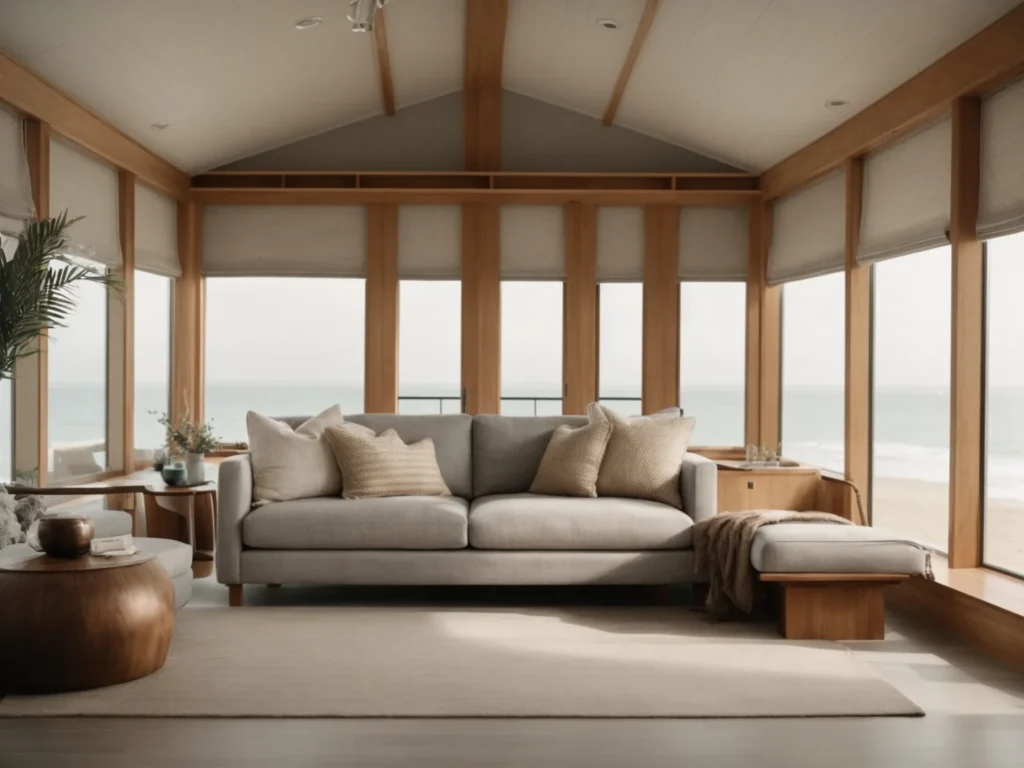
Balboa Mist is slightly darker and warmer than Pale Oak, but still cooler than Classic Gray. Its LRV of 57 creates a serene, relaxing mood. The gray base adapts well in modern and coastal settings.
Classic Gray is warmer and more versatile than Pale Oak and Balboa Mist. The violet-pink cast enables it to bridge warm and cool palettes effortlessly. The distinctive greige character of Classic Gray makes it more widely adaptable.
Sherwin Williams Comparisons: Incredible White, Egret White
Some popular grays from Sherwin Williams offer closer comparisons to Classic Gray. Incredible White and Egret White have similar LRVs and greige characteristics.

Incredible White leans slightly warmer and darker than Classic Gray, with an LRV of 46. The warm gray base establishes an approachable, welcoming ambiance. It adapts well to diverse color schemes.

Egret White is crisper and cooler than Classic Gray. But soft green undertones lend subtle warmth to balance the true white base. At an LRV of 60, it reads as lighter and brighter.
While comparable, Classic Gray stands apart with its distinctive blend of gray and pinkish tones. The Benjamin Moore color offers an unparalleled bridging capability between cool and warm palettes.
Understanding the Nuances Between These Shades
When comparing near-identical shades, subtle nuances make all the difference. Undertones, depth, and LRV create unique moods and adaptability.
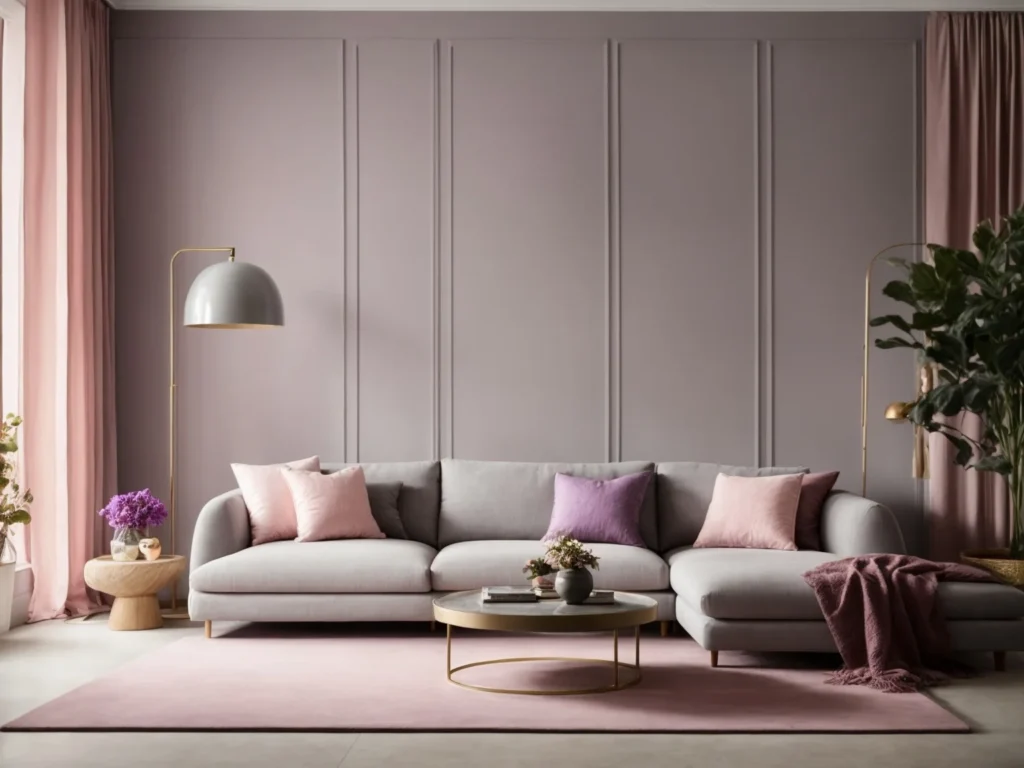
Classic Gray is warmer than Sherwin Williams’ Incredible White and cooler than Egret White. Its distinctive greige versatility comes from the distinctive melding of gray and violet-pink.

The LRV of 50 gives Classic Gray a cozier, more enveloping effect than lighter counterparts. The gray base establishes a soothing and refined ambiance.
These nuances give Classic Gray its signature comfort and sophistication. The pinkish warmth balances perfectly with cool tranquility to create an adaptable, crowd-pleasing neutral.
Classic Gray in Home Improvement Projects
The versatility and greige warmth of Classic Gray make it an ideal choice for home painting projects. It works beautifully on walls, cabinets, doors, trims, and other architectural elements.
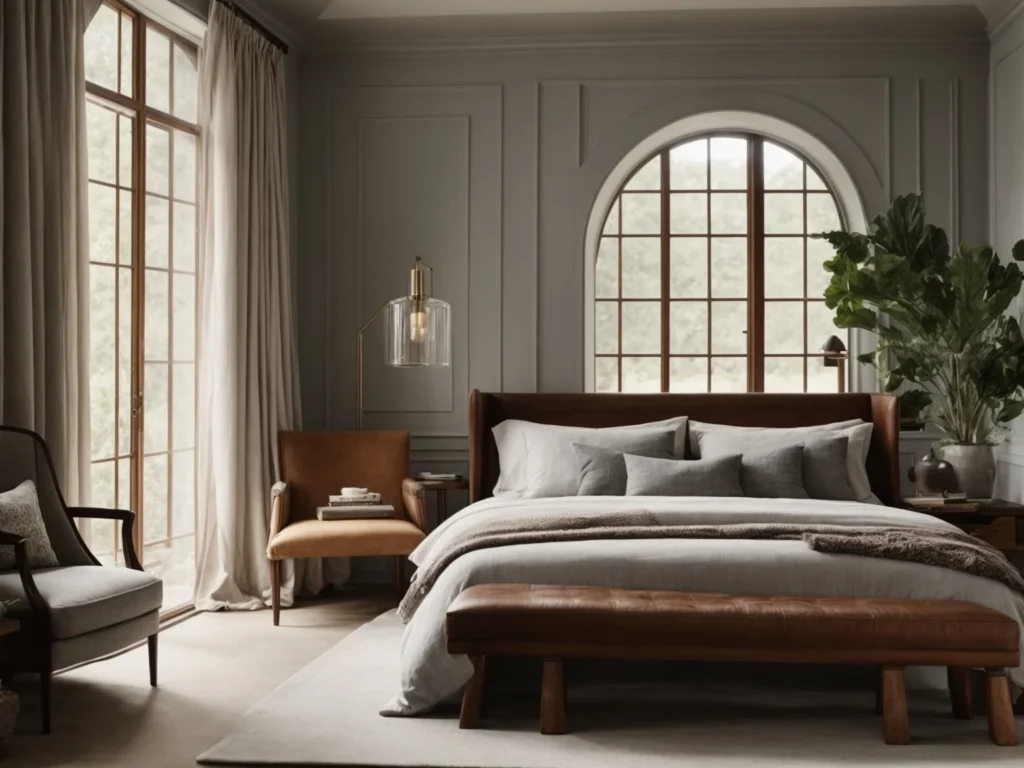
Walls: On interior walls, Classic Gray creates a relaxing, cozy backdrop. The adaptable neutral unifies rooms with disparate woods and colors. Different sheens can add dimension.
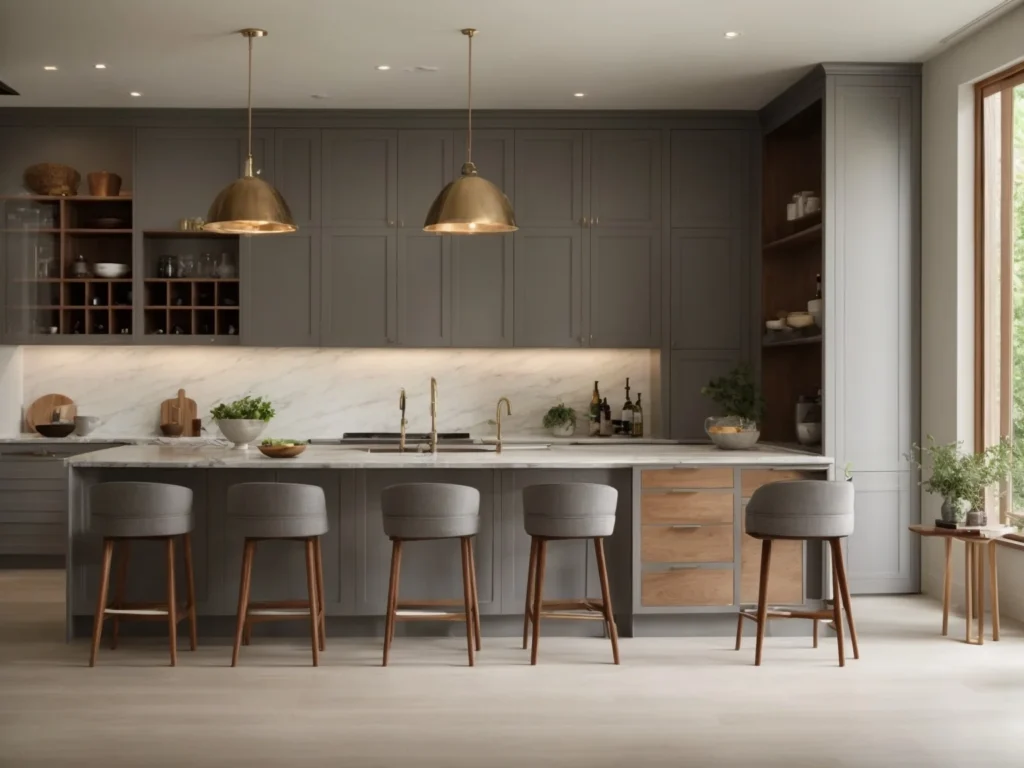
Cabinets: Classic Gray adapts equally well to kitchen and bathroom cabinetry. The greige warmth complements both cool marble and warm wood countertops.
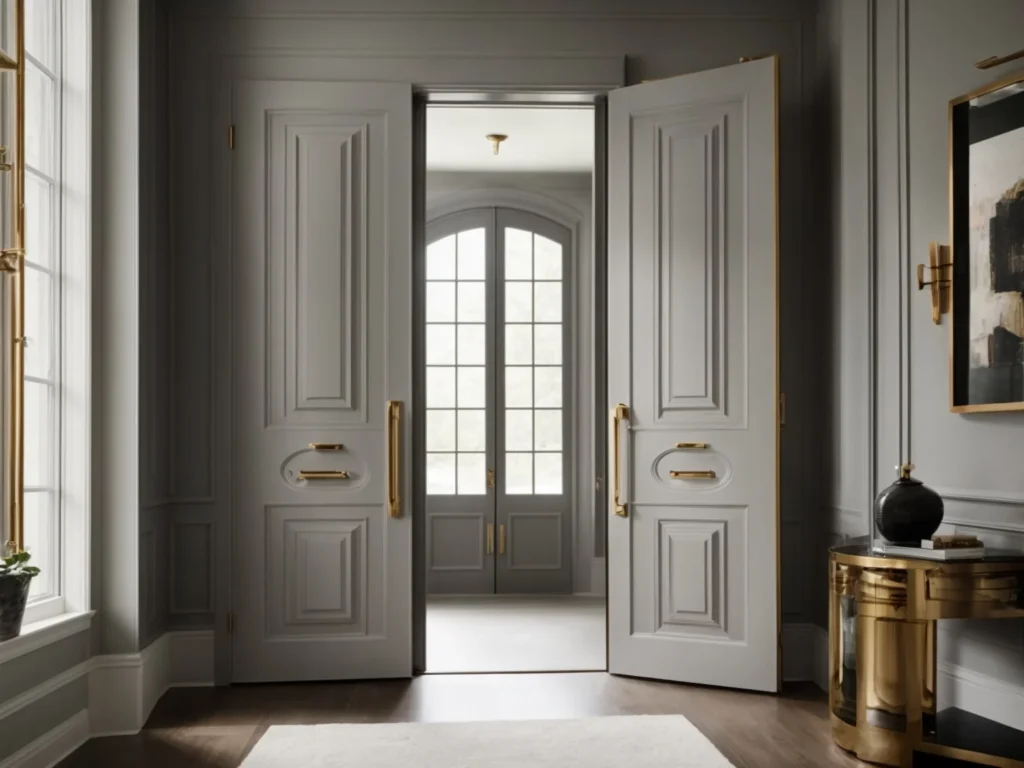
Doors: Front doors, interior doors, built-ins, and closets benefit from Classic Gray’s refined gravitas. Black or brass hardware stand out boldly.

Trims: For window trims, baseboards, and moldings, Classic Gray provides understated sophistication. Crisp white trims contrast elegantly.
Tips for DIY Painting with Classic Gray
Classic Gray’s versatility makes it an approachable DIY paint color. Here are some tips for incorporating it smoothly into home painting projects:
- Test paint swatches on walls at different times of day to gauge changes in light exposure. This will indicate how the undertones come through.
- Opt for top-quality paint like Benjamin Moore’s Aura line and use premium application tools for a smooth professional finish.
- Add a primer coat first for enhanced hide and coverage, especially for drastic color changes.
- Maintain wet edges and watch out for lap marks, especially with darker colors. Roll in sections and avoid stopping mid-wall.
- Use painter’s tape for sharp edges and apply with low tack for delicate surfaces. Remove tape immediately after painting before the paint dries.
- Plan adequate ventilation as gray tones amplify odors during drying. Box fans in windows help dissipate fumes.
Recommended Finishes and Sheens
Classic Gray looks beautiful across a range of finishes. Sheen selection impacts its depth perception and undertones.
Matte: Provides a cozy, enveloping effect. Softens Classic Gray’s subtle warmth. Ideal for bedrooms.
Eggshell: Offers subtle sheen with a velvety appearance. Warmth appears more distinct. Perfect for hallways, family rooms, and living spaces.
Satin: Imparts refined elegance with a delicate glow. Allows pinkish tones to show through distinctly. Ideal for dining rooms, studies, and entryways.
Semi-Gloss: Enhances vibrancy with bolder reflections. Modern and sleek. Well-suited to kitchens, bathrooms, and cabinetry.
High-Gloss: Maximal reflectivity creates bold dramatics. Works well for cabinetry and furniture when paired with matte walls.
Coordinating Colors and Design Elements
Classic Gray has a gorgeous monochromatic effect when used on both walls and trims. But it also pairs beautifully with light neutrals like Chantilly Lace and White Dove by Benjamin Moore.
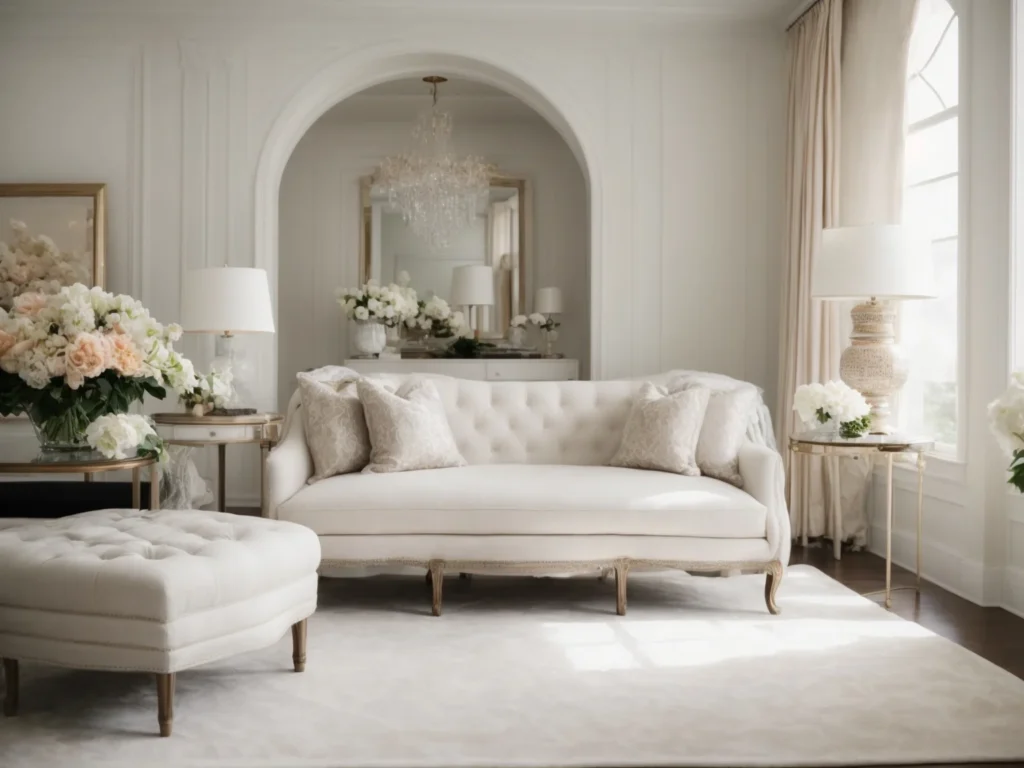
Chantilly Lace (OC-65) is a crisp, clean white with the slightest warmth. Against Classic Gray walls, it reads as bright and airy. Chantilly Lace makes small spaces feel more open.
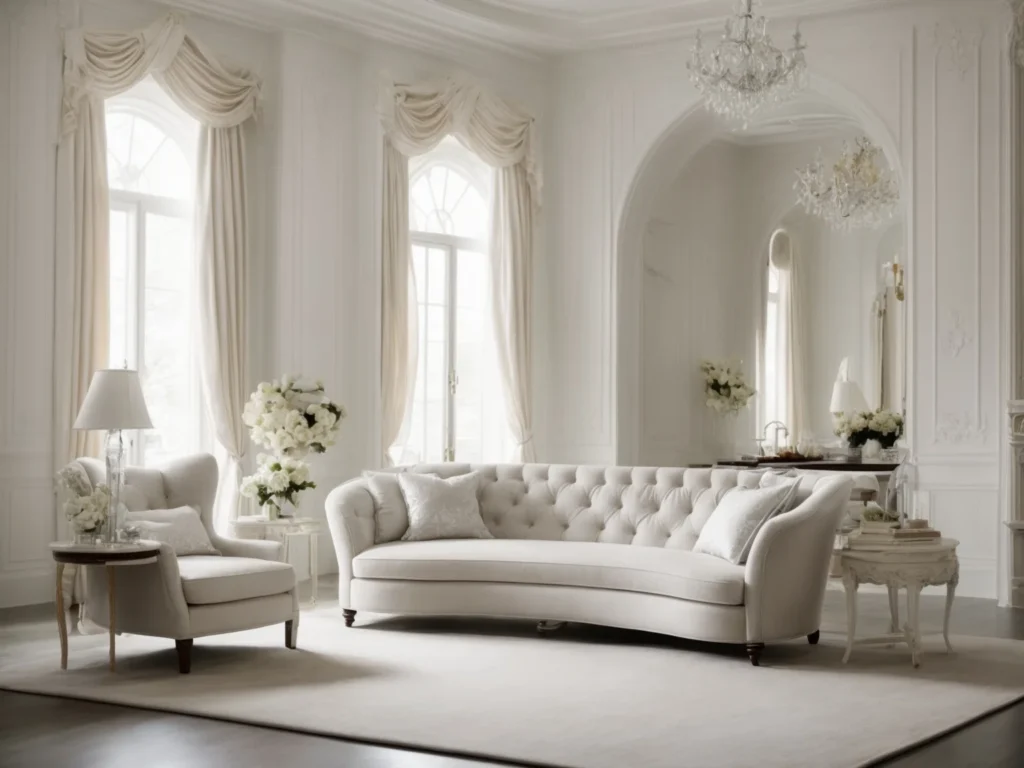
White Dove (OC-17) is a highly versatile white with a delicate gray tinge. It contrasts elegantly with Classic Gray without appearing stark. White Dove has an LRV of 69.
Both these Benjamin Moore whites provide the perfect trim colors to offset Classic Gray’s subtle depth. Crisp white trims frame the gray walls beautifully.
Accent Colors and Complementary Shades
Classic Gray effortlessly embraces accent colors across the spectrum from bold brights to deeper, moodier shades.
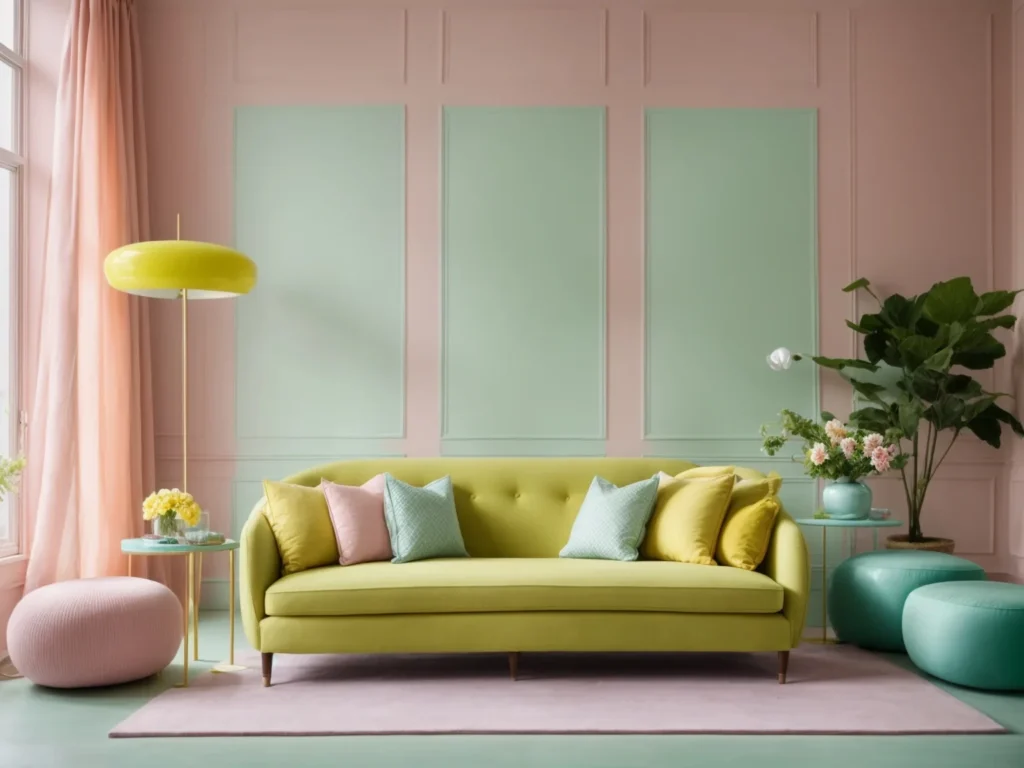
Bright contrasts like apple green, citron, turquoise, and canary yellow bring energy against the tranquil gray backdrop. Soft pastels like blush pink, mint, and lavender lend a romantic charm.
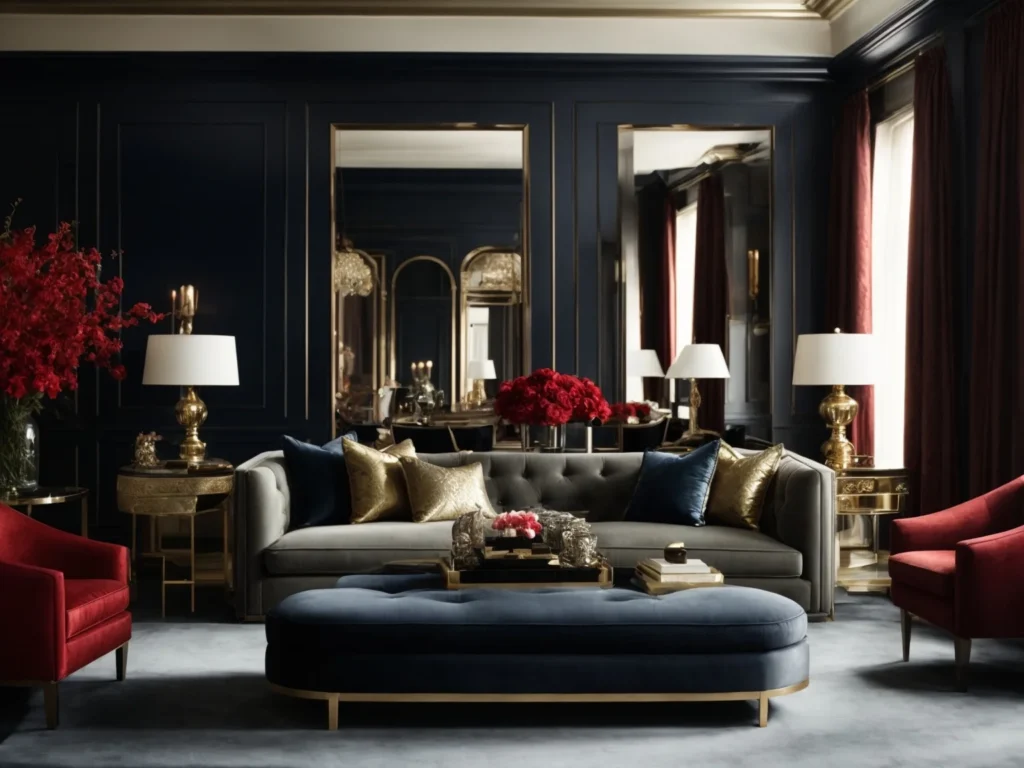
Deeper hues like navy blue, olive, crimson, and charcoal infuse drama without overwhelming. Metallic sheens in silver, champagne, bronze, and brass enrich Classic Gray’s softness with glamour.
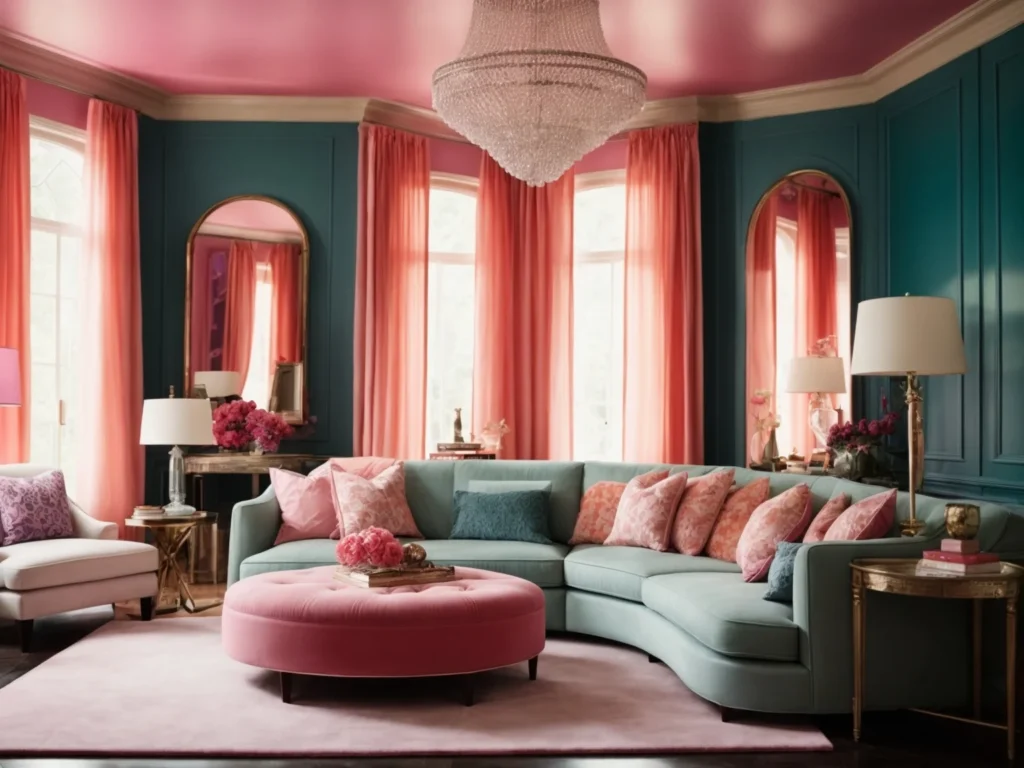
When selecting accents, opt for colors with similar undertones to Classic Gray’s pink and violet hues. Magenta, peach, coral, and buttercream carry the same warmth, allowing for harmonious pairings. For cool contrasts, look to shades of blue, green, gray, and purple.
Overall, the adaptable greige warmth of Classic Gray enables it to welcome both vibrant and muted accent colors with grace and versatility.
Design Tips for a Cohesive Look
- Repeat accents across soft furnishings like pillows, rugs, and decorative objects for a pulled-together look.
- Add warmth with natural wood furniture pieces and greenery. Pops of brass accents tie everything together.
- Use multiple textures like linen, velvet, jute, and sheepskin to balance the smooth uniformity of walls.
- Paint architectural trims and moldings in Classic Gray. Opt for extra wide casings around windows and doors.
- Include large-scale art with warm metallic or wood frames to amplify the sophisticated coziness.
- Layer on table lamps, sconces, and overhead fixtures to show off Classic Gray’s chameleon nature in different lighting.
- Install ceiling beams or a ship lap accent wall in a warm wood. The natural texture enhances Classic Gray’s subtle warmth.
Practical Considerations and Maintenance
Durability and Maintenance of Classic Gray in Different Applications
Classic Gray offers excellent durability and touch-up capability across multiple surfaces when applied properly. Benjamin Moore’s premium Aura paint line provides exceptional coverage and washability.
On interior walls and ceilings, Classic Gray retains its pristine appearance with occasional dusting or spot cleaning. Touch-ups blend seamlessly.
For high-contact areas like cabinets and doors, satin, semi-gloss or high-gloss sheens improve stain resistance and washability.
Outdoor siding, shutters, fences, and furniture hold up better in darker, warmer shades like Classic Gray rather than light colors. Routine pressure washing keeps the color vibrant.
Proper prep and primer create a long-lasting finish. Spot cleaning and periodic touch-ups ensure Classic Gray stays looking fresh in any application.
Tips for Touch-Ups and Long-Term Care
To maintain the like-new appearance of Classic Gray surfaces:
- Keep leftover paint for minor repairs. Store cans upside down to prevent skinning.
- Lightly sand and wipe down areas before touching up paint. Feather out edges.
- Use high-quality mini rollers and angled brushes for easier touch-ups.
- Check walls yearly for scuffs and marks. Spot clean walls before retouching paint.
- Dust regularly with microfiber cloths and vacuum moldings/ceilings to prevent cobwebs and dirt buildup.
- Clean cabinetry and doors with mild soap and water. Avoid abrasive cleaners.
- For exterior surfaces, rinse with garden hose and pressure wash annually.
With proper care and maintenance, Classic Gray retains its sophisticated, welcoming aesthetic for years to come.
Conclusion
Classic Gray by Benjamin Moore offers unmatched versatility among gray paint colors. The distinctive blend of cool gray and warm pinkish undertones allows it to adapt seamlessly in diverse settings. The greige warmth provides coziness without compromising the relaxing tranquility of true gray.
From modern farmhouses to industrial lofts, Classic Gray works across styles. It complements both cool and warm woods, metals, and fabrics effortlessly. The chameleon-like qualities make it suitable for every room while adding an element of distinction. Compared to similar shades, Classic Gray stands out with its signature sophistication and livability.
For homeowners and designers seeking timeless beauty and flexibility, Classic Gray is a perfect choice. The comforting, refined neutral works beautifully for walls, trims, cabinets, doors, and exterior surfaces. With proper maintenance, Classic Gray retains its welcoming elegance for years, highlighting and unifying surrounding furnishings and colors. It provides the ideal worry-free backdrop to transform any space.

